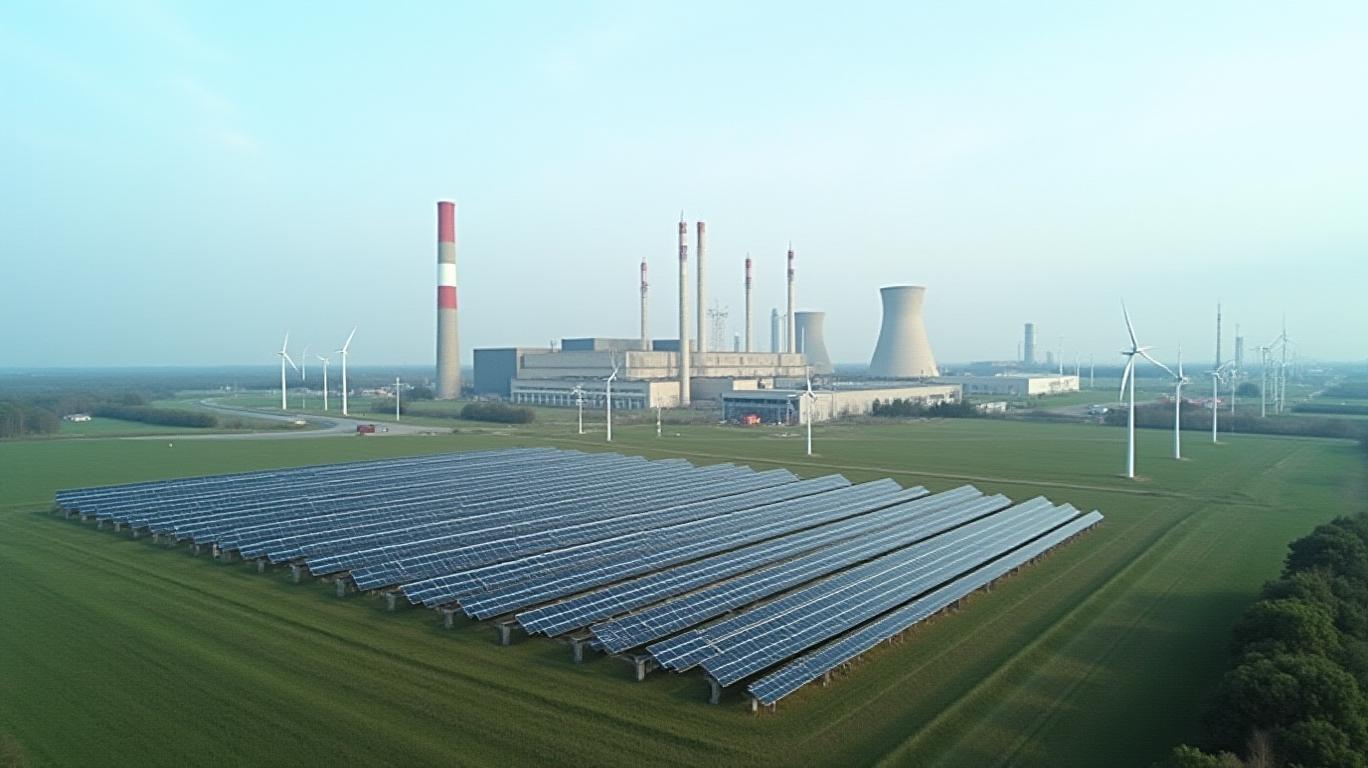AZZ Inc. Charts a Steady Course: FY2026 Guidance Reflects Strategic Resilience
The industrial sector often faces volatility, but AZZ Inc. (NYSE: AZZ) has emerged as a steady performer, reaffirming its commitment to disciplined growth. In late 2025, the company reiterated its fiscal year 2026 (FY2026) earnings guidance, signaling confidence in its operational execution and market positioning. This move not only provides clarity for investors but also underscores AZZ’s focus on margin expansion, debt reduction, and capital allocation discipline. Let’s dissect the details behind this strategic outlook.

The Financial Roadmap: Growth Amid Caution
AZZ’s FY2026 guidance is built on three pillars: sales, adjusted EBITDA, and diluted EPS. Here’s a breakdown of the numbers and their implications:
- Sales Growth: A Modest but Sustainable Target
The company projects FY2026 sales between $1.625 billion and $1.725 billion, a 3%–8% increase over FY2025’s $1.577 billion. While this growth rate may seem conservative, it reflects a deliberate approach to navigate potential macroeconomic headwinds. AZZ’s two core segments—Metal Coatings and Precoat Metals—will drive this expansion, supported by demand in renewables, utilities, and construction.
The guidance assumes stable demand across these sectors, though it acknowledges risks such as inflationary pressures and supply-chain disruptions. Notably, the upper end of the sales range represents a 7.5% growth rate, aligning with historical averages when excluding pandemic-driven volatility.
- Adjusted EBITDA: Margin Expansion in Focus
The company aims for an EBITDA range of $360 million–$400 million, up from $347.9 million in FY2025. This improvement hinges on operational efficiencies and volume-driven gains. AZZ’s Metal Coatings segment is expected to operate within a 27%–32% EBITDA margin, while Precoat Metals targets 17%–22%. These ranges signal confidence in cost management, particularly in controlling raw material costs (zinc and natural gas) and optimizing production.
The midpoint of the EBITDA guidance implies a +12% increase over FY2025, a strong indicator of profitability growth.
- EPS Growth: Capital Structure and Tax Efficiency
Adjusted diluted EPS is projected to rise to $5.50–$6.10, up from $5.20 in FY2025. This improvement stems from lower interest expenses (as debt is reduced) and a stable 25% effective tax rate. The midpoint of this range represents a +17% increase in EPS year-over-year, demonstrating the company’s ability to leverage its cash flow for shareholder returns.
Key Assumptions and Risks
AZZ’s guidance is not immune to external factors. The company explicitly excludes potential acquisitions and federal regulatory changes, focusing instead on organic growth. This prudent approach avoids overpromising on speculative ventures. However, investors should monitor macroeconomic risks:
- Supply-chain stability: Delays in raw materials or logistics could impact production timelines.
- Interest rate environment: While reduced debt is favorable, rising rates may complicate future financing.
- Demand sustainability: A slowdown in renewable energy or construction sectors could dampen sales growth.
Strategic Priorities: Debt Reduction and Capital Allocation
The company’s capital allocation strategy is as critical as its top-line targets. Key moves include:
- Debt deleveraging: With net leverage below 2.5x at FY2025’s end, AZZ plans to further reduce debt using operating cash flow and proceeds from its AVAIL joint venture, which is projected to deliver over $200 million in proceeds.
- CapEx moderation: FY2026 capital expenditures are expected to drop to $60–80 million, down from FY2025’s $115 million, as the Missouri greenfield project nears completion.
- Shareholder returns: The dividend is likely to remain a priority, with the company targeting a balance between debt reduction and rewarding investors.
Conclusion: A Solid Foundation for Long-Term Value
AZZ’s FY2026 guidance paints a picture of a company prioritizing resilience over aggressive growth. With a focus on margin expansion, debt reduction, and disciplined capital allocation, the company is positioning itself to navigate economic cycles. The +17% EPS midpoint growth and $249.9 million FY2025 operating cash flow highlight its financial health.
Investors should note that AZZ’s strategy leans on its core competencies—metal coatings and pre-painted metals—where it holds strong market share. While risks like raw material cost fluctuations exist, the company’s historical ability to manage these through pricing adjustments and operational agility offers reassurance.
For long-term investors, AZZ’s valuation—currently trading at a 14x FY2026 EPS midpoint—appears reasonable given its stable cash flows and deleveraging trajectory. The stock’s +22% total return over the past five years versus the S&P 500’s +12% further underscores its resilience.
In sum, AZZ’s reiterated guidance is not just a financial forecast but a strategic manifesto: a commitment to disciplined growth, balance sheet strength, and shareholder value. For those willing to weather near-term uncertainties, this could be a solid bet on industrial resilience.










